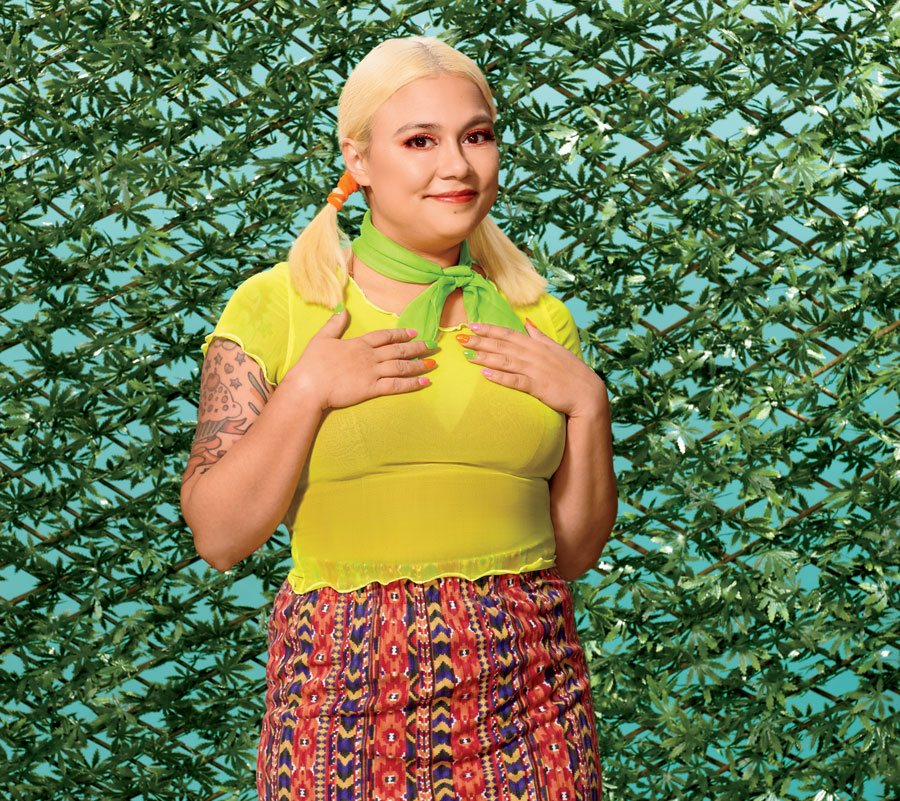
Vape pens or joints? Where should a beginner, um, begin?
Disposable vape pens are really intuitive for people new to cannabis because everything in the package is ready to go. The pen is charged and preloaded with concentrated cannabis oil. You just pull it out and start puffing. First-timers can take one puff, wait awhile, and see how they feel. With a prerolled joint, once it’s lit, there can be pressure to consume more than you might be comfortable with.
There’s been a lot of news about mysterious vaping-linked illnesses and even some deaths. Should I be worried?
Thanks to the Centers for Disease Control and Prevention, we now know the likely culprit is the use of vitamin E acetate in vape cartridges or pens. That has never been used in any certified Illinois cannabis products, and none of the cases here were caused by Illinois products.
And what about edibles? I’ve heard some scary freak-out stories involving them.
With edibles, it’s a little bit like being strapped in for a ride: Once it takes off, you can’t really say, “I want to go back to earth now!” Each edibles package — whether it’s gummies or a chocolate bar — can legally contain up to 100 milligrams of THC, or tetrahydrocannabinol, the main psychoactive ingredient in cannabis, divided into smaller doses of varying size, depending on the product. I recommend first-timers take a microdose, which is about five milligrams of THC, and wait two hours to gauge how they’re feeling before taking a second. Gradually increase your dose to find your sweet spot.
My weed-savvy friends keep talking about THC-to-CBD ratio. What the heck is that?
A lot of people want to buy the product with the highest THC percentage, thinking they’re getting the most bang for their buck. Fifteen to 19 percent THC is average; more than 20 percent is high. But don’t put so much emphasis strictly on the THC level — it doesn’t tell the whole story. It’s more useful to look at the ratio between the percentages of THC and CBD. THC is what makes you feel high, gives you feelings of euphoria. CBD, a.k.a. cannabidiol, is useful for pain relief and as an anti-inflammatory. It’s what gives you the body high — a really nice, warm, relaxed, and comforting feeling. THC and CBD work very well in tandem. A strain with an equal CBD-to-THC ratio is a jack-of-all-trades: It balances you out, makes it easier to roll with life’s punches.
What’s the whole sativa versus indica thing about?
Those are the broad classifications of the genetic makeup of the plants. A sativa strain is more likely to provoke anxiety, paranoia, racing thoughts, feeling trapped in your head — the negative things people associate with cannabis. But sativas are also more energizing, less likely to make you sleepy, and more likely to provide pronounced feelings of euphoria. Indica tends to be more mellow.
Everyone remembers Maui Wowie, but now strains have names like Green Crack, Cat Piss, and Bio-Jesus. What’s up with that?
Many times, names tell a story. A good example is Girl Scout Cookies. That strain has been crossbred with tons of others to create new ones — Monster Cookies, Cookies and Cream, and so on. That gives you a sense of what the flavor is going to be like. Anything descended from Girl Scout Cookies is going to have a sweet, dessert-like, biscuity taste. Some cultivators use inside jokes or obscure references. Sometimes it’s just marketing: Illinois cultivator Nature’s Grace and Wellness has a strain called Chicago Blue Dream. When they did a crossbreed of the classic strain Blue Dream, they wanted to appeal to the local market.
As of January 1, can my friend who has a medical-use card just throw it away?
Tell him to keep it. Medical cannabis will be cheaper than recreational cannabis. And the limits of how much you can buy are significantly higher. Also, medical patients can grow their own plants.
It’s Illinois, so I expect I’ll have to pay taxes. How bad will it be for cannabis?
Dispensary customers can expect to pay between 20 and 35 percent tax at the register for recreational purchases. That includes state and local sales taxes, as well as the graduated cannabis tax, whose rate varies based on the product’s THC level: 10 percent tax on flower or concentrates with less than 35 percent THC; 20 percent on edibles; 25 percent on any item with more than 35 percent THC.


